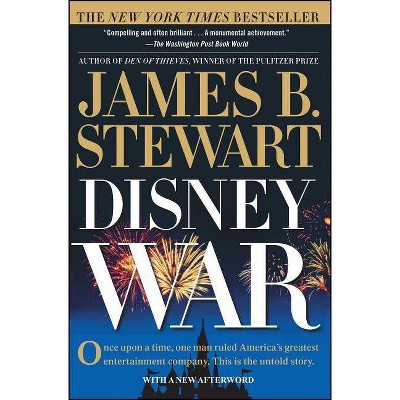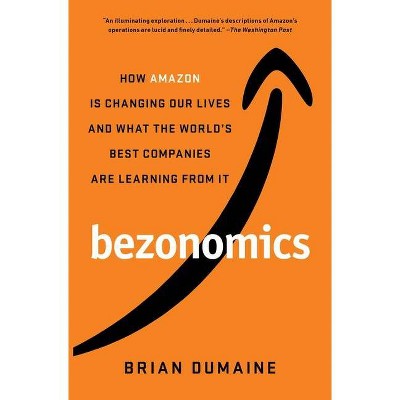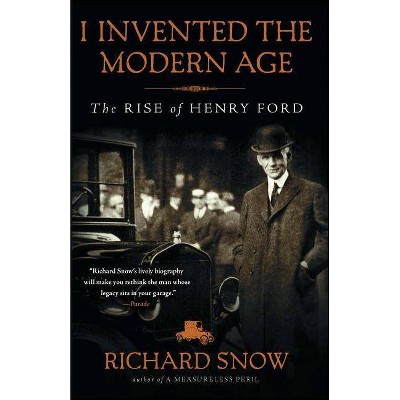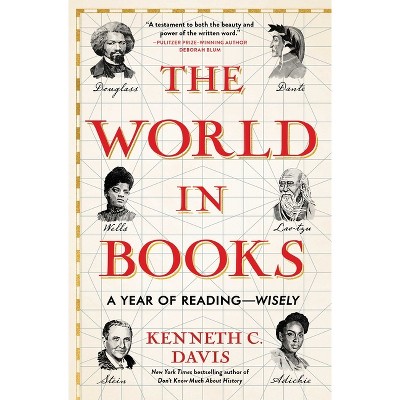Sponsored

Disney's Land - by Richard Snow (Paperback)
$11.99Save $8.01 (40% off)
In Stock
Eligible for registries and wish lists
Sponsored
About this item
Highlights
- A propulsive and "entertaining" (The Wall Street Journal) history chronicling the conception and creation of the iconic Disneyland theme park, as told like never before by popular historian Richard Snow.
- Author(s): Richard Snow
- 432 Pages
- Business + Money Management, Corporate & Business History
Description
About the Book
"By the early 1950s Walt Disney's great achievements in animation were behind him, and he was increasingly bored by the two-dimensional film medium. He wanted to work in three, to build an entirely new sort of amusement park, one that relied more on cinematic techniques than on thrill rides ... Disneyland's Main Street sparked an architectural preservation movement that touched every American downtown--and remains controversial: many see it as a retreat from life itself. What is beyond argument is that Disneyland was something new, both in public entertainment and in the way its 'lands' managed to chime with how millions of Americans wanted to view their country"--Book Synopsis
A propulsive and "entertaining" (The Wall Street Journal) history chronicling the conception and creation of the iconic Disneyland theme park, as told like never before by popular historian Richard Snow. One day in the early 1950s, Walt Disney stood looking over 240 acres of farmland in Anaheim, California, and imagined building a park where people "could live among Mickey Mouse and Snow White in a world still powered by steam and fire for a day or a week or (if the visitor is slightly mad) forever." Despite his wealth and fame, exactly no one wanted Disney to build such a park. Not his brother Roy, who ran the company's finances; not the bankers; and not his wife, Lillian. Amusement parks at that time, such as Coney Island, were a generally despised business, sagging and sordid remnants of bygone days. Disney was told that he would only be heading toward financial ruin. But Walt persevered, initially financing the park against his own life insurance policy and later with sponsorship from ABC and the sale of thousands and thousands of Davy Crockett coonskin caps. Disney assembled a talented team of engineers, architects, artists, animators, landscapers, and even a retired admiral to transform his ideas into a soaring yet soothing wonderland of a park. The catch was that they had only a year and a day in which to build it. On July 17, 1955, Disneyland opened its gates...and the first day was a disaster. Disney was nearly suicidal with grief that he had failed on a grand scale. But the curious masses kept coming, and the rest is entertainment history. Eight hundred million visitors have flocked to the park since then. In Disney's Land, "Snow brings a historian's eye and a child's delight, not to mention superb writing, to the telling of this fascinating narrative" (Ken Burns) that "will entertain Disneyphiles and readers of popular American history" (Publishers Weekly).Review Quotes
"My favorite new book of 2019... brisk, smart, a delight." --Richard Brookhiser, The Wall Street Journal
"Call it what you will: a fantasy, a folly, a country of its own, a city from the Arabian Nights, a giant cash register, a monument to Main Street, a saccharine absurdity, a triumph of urban design. Richard Snow calls Disneyland an invention on par with the Kitty Hawk Flyer and--in the most shapely of narratives--not only convinces us of its magic but somehow reproduces that magic on the page. A witty, wild, wondrous Tilt-A-Whirl of a book." --Stacy Schiff, Pulitzer Prize-winning author of The Witches and Cleopatra: A Life "This is a deeply felt and deeply researched story about the complicated man and his vision to create 'the happiest place on earth.' Snow brings a historian's eye and a child's delight, not to mention superb writing, to the telling of this fascinating narrative." --Ken Burns "Richard Snow gives Disney fans everything they could want in a history of the world's favorite theme park, from its nascent phase as a mere faraway look in Walt Disney's eye, to the hysteria of its opening day, with the freshly poured asphalt on Main Street barely set--and beyond. Snow is a great researcher and a terrific storyteller--and no detail is too small, whether it's the landscaping, the design of the rides, or the way Walt Disney did (or didn't) manage the money. As Snow tells it, Disney's Land is more than mere history; it's a page-turner of a suspense story, and, even knowing how it all turns out, you'll find yourself wondering if Walt is really going to get his pie-in-the-sky project ready in time for its opening day. I couldn't put it down." --Brian Jay Jones, New York Times bestselling author of Jim Henson: The Biography and Becoming Dr. Seuss: Theodor Geisel and the Making of an American Imagination
"Entertaining...Mr. Snow [proves] to be as solid a storyteller as Walt Disney himself." --The Wall Street Journal "Disney fans will enjoy this rendering of the founder and entrepreneurs will find their time well spent inside the covers of Snow's book." --Associated Press "Disneyland is rarely mentioned as a milestone American invention, but it should be...The captivating origin story of the 'Happiest Place on Earth' is well-told in Disney's Land, the latest work from esteemed historian and novelist Richard Snow. It's a rollicking read befitting the home of Mr. Toad's Wild Ride, chock full of Alice-in-Wonderland-level surprises, with the grandeur of Sleeping Beauty's Castle, and other delightful details (Walt Disney would eat his favorite hot dog lunch from a cart, walk away, and place garbage receptacles at the exact spot he finished his frankfurter.)" --Medium
"Fantastic." --New York Journal of Books "[An] exceptional biography of the Disneyland theme park ... Snow's attention to detail and impeccable research are the true highlights of a tremendous work of popular history." --New England Journal of History
"The clockwork of the park -- and to some extent, the personality of the man who created it -- receives an expert inspection...Readers are led toward the climax of opening day, July 17, 1955, with narrative wienies aplenty and the whole enterprise is shown as a magnificent amoeba that was as much an accident as a mastered design." --The New York Times Book Review "Eight hundred million visitors have trekked to the so-called 'happiest place on earth' since its 1955 opening, seeking its carefully scripted brand of excitement and cheer. How and why Walt Disney envisioned a place where people 'could live among Mickey Mouse and Snow White' is carefully detailed in this new book." --Washington Post, "Best Books to Read in December" "An extremely entertaining story... Disney's Land is Snow's exhaustively researched, jam-packed chronicle of how Walt Disney conceived and created a new kind of amusement park." --Newsday
"This joyful, lavishly detailed account will entertain Disneyphiles and readers of popular American history." --Publishers Weekly "An animated history of an iconic destination." --Kirkus Reviews "Snow's smooth narrative spotlights the hard work and heart that the 'happiest place on Earth'." --Booklist
Dimensions (Overall): 8.3 Inches (H) x 5.4 Inches (W) x 1.1 Inches (D)
Weight: .75 Pounds
Suggested Age: 22 Years and Up
Number of Pages: 432
Genre: Business + Money Management
Sub-Genre: Corporate & Business History
Publisher: Scribner Book Company
Format: Paperback
Author: Richard Snow
Language: English
Street Date: December 1, 2020
TCIN: 80404811
UPC: 9781501190810
Item Number (DPCI): 247-48-1733
Origin: Made in the USA or Imported
If the item details aren’t accurate or complete, we want to know about it.
Shipping details
Estimated ship dimensions: 1.1 inches length x 5.4 inches width x 8.3 inches height
Estimated ship weight: 0.75 pounds
We regret that this item cannot be shipped to PO Boxes.
This item cannot be shipped to the following locations: American Samoa (see also separate entry under AS), Guam (see also separate entry under GU), Northern Mariana Islands, Puerto Rico (see also separate entry under PR), United States Minor Outlying Islands, Virgin Islands, U.S., APO/FPO
Return details
This item can be returned to any Target store or Target.com.
This item must be returned within 90 days of the date it was purchased in store, shipped, delivered by a Shipt shopper, or made ready for pickup.
See the return policy for complete information.






